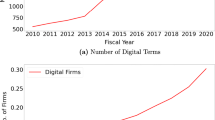Abstract
This paper describes results of our survey of licensing at 62 research universities. We consider ownership, income splits, stage of development, marketing, license policies and characteristics, goals of licensing and the role of the inventor in licensing. Based on these results we analyze the relationship between licensing outcomes and both the objectives of the TTO and the characteristics of the technologies. Patent applications grow one-to-one with disclosures, while sponsored research grows similarly with licenses executed. Royalties are typically larger the higher the quality of the faculty and the higher the fraction of licenses that are executed at latter stages of development. Sponsored research is more likely to be included in a license if the new technology is at an early stage of development or if the TTO evaluates it as important. We find that additional disclosures generate smaller percentage increases in licenses, and those increases in licenses generate smaller percentage increases in royalties.
Similar content being viewed by others
References
Adams, J., 1990, 'Fundamental Stocks of Knowledge and Productivity Growth', Journal of Political Economy 98, 673–702.
Adams, J., 1998, 'Endogenous R & D Spillovers and Industrial Research Productivity', manuscript, University of Florida.
Association of University Technology, Inc., 1996, 1997. AUTM Licensing Survey.
Cohen, W.M., R. Florida, L. Randazzese, and J. Walsh, 1998, 'Industry and the Academy: Uneasy Partners in the Cause of Technological Advance', in Roger Noll ed., Challenges to Research Universities, Washington, D.C.: The Brookings Institution, pp. 171–199.
Henderson, R., A. Jaffe, and M. Trajtenberg, 1998, 'Universities as a Source of Commercial Technology: A Detailed Analysis of University Patenting, 1965- 1988', Review of Economics and Statistics, 119–127.
Holmstrom, B., 1989, 'Agency Costs and Innovation', Journal of Economic Behavior and Organization 12, 305–327.
Jaffe, A., 1989, 'Real Effects of Academic Research', American Economic Review 79 5, 957–970.
Jaffe, A., M. Trajtenberg, and R. Henderson, 1993, 'Geographic Localization of Knowledge Spillovers as Evidenced by Patent Citations', Quarterly Journal of Economics 108 3, 577–598.
Jansen, C. and H. Dillon, 1999, 'Where do the Leads Come From? Source Data from Six Institutions', The Journal of the Association of University Technology Managers
Jensen, R. and M. Thursby, 1999, 'Proofs and Prototypes for Sale: The Licensing of University Inventions', American Economic Review, forthcoming.
Kamien, M., 1992, 'Patent Licensing', in R. Auman and S. Hart eds., Handbook of Game Theory, Amsterdam: North Holland.
Mansfield, E., 1995, 'Academic Research Underlying Industrial Innovations: Sources, Characteristics, and Financing', The Review of Economics and Statistics 77, 55–65.
Mansfield, E. and Y. Lee, 1996, 'The Modern University: Contributor to Industrial Innovation and Recipient of Industrial R & D Support', Research Policy 25, 1027–1058.
Mowery, D., R. Nelson, B. Sampat, and A. Ziedonis, 1999, 'The Effects of the Bayh-Dole Act on U.S. University Research and Technology Transfer: An Analysis of Data from Columbia University, the University of California, and Stanford University', Research Policy, forthcoming.
Mowery, D. and A. Ziedonis, 1999, 'The Effects of the Bayh-Dole Act on U.S. University Research and Technology Transfer: Analyzing Data from Entrants and Incumbents', Research Policy, forthcoming.
National Research Council, Research Doctorate Programs in the United States, 1995, M. Goldberger, B. Maher, and P. Flattau eds., Washington, D.C.: National Academy Press.
Parnes, M., G. Omenn, and E. Brock, 2000, 'A Case Study of System Complexity and Regional Approaches to Technology Transfer', The Journal of Technology Transfer, forthcoming.
Rosenberg, N., 1992, 'Scientific Instrumentation and University Research', Research Policy 21, 381–390.
Siegel, D., D. Waldman, and A. Link, 1999, 'Assessing the Impact of Organizational Practices on the Productivity of University Technology Transfer Offices: An Exploratory Study', NBER Working Paper a7256.
Thursby, J. and S. Kemp, 2000, 'Growth and Productive Efficiency of University Intellectual Property Licensing', Research Policy, forthcoming.
Thursby, J. and M. Thursby, 2000a, 'Who is Selling the Ivory Tower? Sources of Growth in University Licensing', NBER Working Paper a7718.
Thursby, J. and M. Thursby, 2000b. 'Industry Perspectives on Licensing University Technologies: Sources and Problems', The Journal of the Association of University Technology Managers, forthcoming.
Ziedonis, A., 1999, 'Inward Technology Transfer by Firms: The Case of University Technology Licenses', manuscript, University of Pennsylvania.
Zucker, L., M. Darby, and J. Armstrong, 1998, 'Geographically Localized Knowledge: Spillovers or Markets', Economic Inquiry 36 1, 65–86.
Zucker, L., M. Darby, and M. Brewer, 1998, 'Intellectual Capital and the Birth of U.S. Biotechnology Enterprises', American Economic Review 88, 290–306.
Author information
Authors and Affiliations
Rights and permissions
About this article
Cite this article
Thursby, J.G., Jensen, R. & Thursby, M.C. Objectives, Characteristics and Outcomes of University Licensing: A Survey of Major U.S. Universities. The Journal of Technology Transfer 26, 59–72 (2001). https://doi.org/10.1023/A:1007884111883
Issue Date:
DOI: https://doi.org/10.1023/A:1007884111883




